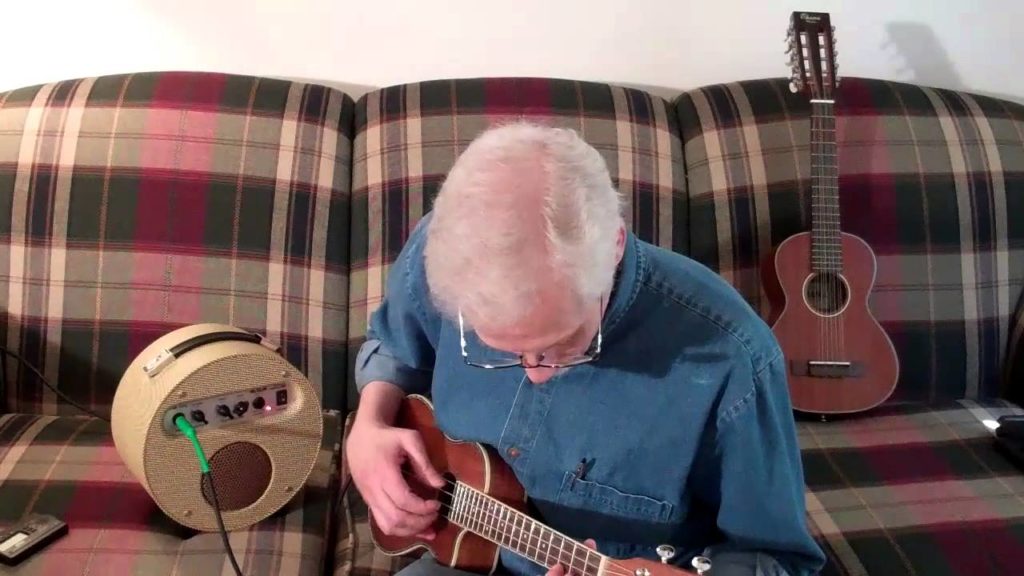e Ukulele amplifier – If you are just starting to learn to play ukulele or e ukulele, you’ve probably heard of and even tried to figure out how to read ukulele tabs. It looks very much like a musical staff, except that it has one more line (or one less in the case of a bass tab). Additionally, tablature uses numbers to denote what notes to play as opposed to note heads and rests. Unlike a musical staff, tabs are specific to the stringed instruments I’ve listed (the reason being that in tabs, each line refers to a particular string whereas on a musical staff, each line and each space is assigned to a particular note).
Ukulele Setup Tabs
So. The question arises, which one should you learn to read? You’re best bet would be to understand both how to read tabs and how to read music, but we’re not all made of time. Tabs, in short, are easy to figure out, while learning how to read music will take a bit more time…quite a significant bit, at that. Ukulele setup tabs music has two huge benefits over tablature, which is that it can be used for any instrument (including the guitar and the bass) and, even more importantly, that it denotes rhythm. It is impossible to sit down and look at a tab and figure out how to play a song for this reason – you would need to actually have the song available to listen to. As a picture is worth a thousand words, I’ll just post an example of a short ukulele setup tab; reading a bass tab is essentially the same, but with less strings.
Absinthe Party at the Fly Honey Warehouse by Minus the Bear
E|——————|——————|——————|
B|——————|——————|——————|
G|———-12p-0-|———-12p-0-|———-12p-0-|
D|—-12p-0——-|—–12p-0——|—-12p-0——-|
A|——————|——————|——————|
D|-0h-5———–|-0h-5————|-0h-9————|
How to Read Ukulele Setup or e Ukulele Tabs
Now, this is just a very short example of a tab. As you can see, there are six lines representing the six strings on a guitar. In the case of this song, the low E-string is tuned down to a D, and thus the writer of the tab needs to display that in his work here. Otherwise, you’ll find yourself playing something completely different. The numbers on the lines tell you which fret to…well, fret. Unfortunately, there isn’t much of any way to know how long to play each note. This is why you need the song to actually listen to in the case of tabs. If this were sheet music, the note head and flag would tell you exactly how long to play each note for, but alas, that is not the boat that we are in.
As with anything manmade, there are low and high quality tabs. I picked out a slightly more advanced one…the writer uses vertical lines between each phrase to denote the end of a measure (a rhythmic term for a set number of beats) and gives you an idea of how long to play each note via the space between them. He (assuming that Pratt Man is, in fact, not a woman) also uses the letters “p” and “h” to show the reader where to perform certain techniques: in this case, pulling on and hammering off respectively.
Play the Ukulele or e Ukulele and Practice to Learn
In short, it is certainly worthwhile to learn how to read ukulele and bass tabs, but I’d call it irresponsible to rely solely upon them. As I said, sheet music itself has certain benefits that far outweigh those of tablature if you have the time and patience to learn it. Again, it helps to learn both and even to be able to see them at the same time. Fortunately, one can easily print out free blank sheet music and blank tablature. For now though, Google “insert-song-name-here tabs” and find a tab with a high rating. Pick up that Les Paul, Telecaster, or Shiro, and use your ears, your eyes, and your hands to get a move on. Good luck.
- How to support your child’s mental health: A parent’s guide - February 1, 2025
- Can data centers stay green? Balancing digital growth with clean energy - January 26, 2025
- Why Blockchain could be end of high fees, delays in global payments - January 17, 2025
- Abridge AI: Silent scribe transforming healthcare interactions - January 5, 2025
- What makes quantum AI a game-changer for technology - December 25, 2024
- How businesses must adapt to evolving cyber threats in 2025 - December 4, 2024
- How vaping stiffens blood vessels and strains lungs: Study - November 26, 2024
- OpenAI Codex or Google Codey? Finding the perfect AI for your code - November 18, 2024
- What Google’s Project Jarvis means for future of digital interaction - October 28, 2024
- 11 tips for creating engaging ad content - July 8, 2024




